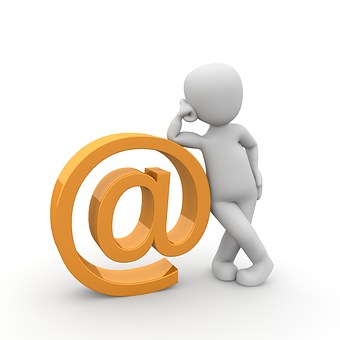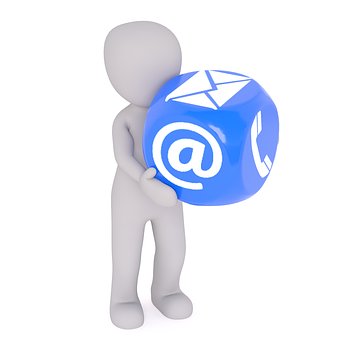Email Not Receiving
In an age where instant communication is pivotal, encountering problems like cannot receive emails or finding yourself unable to receive emails can create significant disruptions in both personal and professional life. Emails serve as a lifeline in our digital society, and when that lifeline is severed, it can lead to missed opportunities, delayed responses, and increased stress.
 This comprehensive guide is designed to address these email not receiving issues, providing insight, solutions, and guidance on how to get your inbox back in working order. We will delve into the possible reasons why you might be unable to receive emails, exploring common factors and hidden culprits. Next, we will guide you through practical solutions to restore your email flow, focusing on step-by-step procedures and easy-to-follow instructions.
This comprehensive guide is designed to address these email not receiving issues, providing insight, solutions, and guidance on how to get your inbox back in working order. We will delve into the possible reasons why you might be unable to receive emails, exploring common factors and hidden culprits. Next, we will guide you through practical solutions to restore your email flow, focusing on step-by-step procedures and easy-to-follow instructions.
Finally, we will take you into the intricate world of configuring mail incoming server settings. This essential aspect of email setup is often the key to resolving persistent problems and ensuring a smooth email experience. Whether you are a tech-savvy professional or just a regular user troubled by the “email not receiving” issue, this guide aims to empower you with the knowledge and tools you need to stay connected and control your digital communication. Join us as we unravel the complexities and put you back in touch with your inbox.
Causes of Not Getting Emails:
In our digital world, email has become the main mode of communication for both personal and professional interactions. When you find yourself not receiving emails from one person or not getting emails at all, it can be more than just a minor problem. Understanding the reasons behind the Email not Receiving issues is the first step toward resolving them. Let’s explore some common causes:
- Email Filter Settings: Sometimes, when you’re not receiving emails from one person, it could be due to email filter settings. These filters might mistakenly classify legitimate emails as spam or junk, causing you to miss them.

- Server Issues: General server issues might be the culprit when you’re not getting emails. If the email server is down or experiencing difficulties, it can disrupt the entire flow of incoming emails.
- Incorrect Email Address: A simple typo or incorrect email address could be why you’re not receiving emails from one person.
- Full Mailbox: If your inbox is full, you might find yourself not getting emails.
- Internet Connectivity Issues: Without a stable internet connection, the issue of not getting emails can arise.
- Blocked Senders: If you’re not receiving emails from one person specifically, it might be due to blocked senders. This setting can prevent emails from certain addresses or domains from reaching your inbox.
- Synchronization Problems: Sometimes, you might face issues of not getting emails due to synchronization problems between your email client and server.
- Outdated Email Client: Using an outdated or incompatible email client might be why you’re not receiving emails from one person at all.
By understanding these common reasons, we can better diagnose why you might find yourself not receiving emails from one person or why you’re not getting emails in general. Whether it’s a simple setting adjustment or a more complex server issue, recognizing the underlying cause is the key to unlocking the solutions. In the next section, we will explore how to address these challenges, ensuring that your inbox is always open and ready for communication.
How to Fix Email Not Receiving Issue:
When faced with the daunting situation where emails are not being received, or you’re simply not getting emails, a quick and effective solution is often needed. Missing out on important communications can be disruptive and stressful. Fortunately, there are several steps you can take to resolve these issues. Here’s a comprehensive guide to getting your email back on track:
- Check Spam and Junk Folders: Sometimes, emails not being received are actually in your spam or junk folders. Reviewing these folders and marking legitimate emails as safe can prevent this issue in the future.

- Verify Email Address: If you’re not getting emails from a specific person, make sure that their email address is correct. A simple typo can lead to emails not being received.
- Inspect Filter and Blocking Settings: Inappropriate filter or blocking settings might be why you’re not getting emails. Reviewing and adjusting these settings can resolve the issue.
- Ensure Enough Storage Space: Clearing out old emails and making sure there’s enough storage space in your inbox can prevent problems with emails not being received.
- Update or Reinstall Email Client: If you’re using an outdated or corrupted email client, updating or reinstalling it can fix issues of not getting emails.
- Check Internet Connection: An unstable or disconnected internet connection might be why emails are not being received. Ensuring you’re connected to the internet is a fundamental step.
- Consult with Your Email Provider: If you’ve tried everything and still find that emails are not being received, it might be time to contact your email provider’s support team. They can often pinpoint and fix underlying server issues.
- Synchronize Your Email Account: Ensuring that your email account is properly synchronized across all devices can resolve issues of not getting emails. Consult your email client’s support documentation for specific instructions.
- Investigate Firewall and Security Software: Sometimes, overzealous security software might be why you’re not getting emails. Adjusting these settings or adding exceptions for your email client can restore normal functionality.
- Try Different Devices or Browsers: If emails are not being received on one specific device or browser, try accessing your email from a different platform. Compatibility issues might be the underlying cause.
By understanding and applying these solutions, you can triumph over the frustrating situation where emails are not being received, or you find yourself not getting emails. Whether it’s a quick setting adjustment or a more complex solution, these strategies offer a clear path to restoring your email communication. Your inbox is an essential part of your digital life, and keeping it functioning smoothly ensures you stay connected, informed, and engaged.
Configure Email Server Settings:
 One of the most overlooked but crucial aspects of email functionality is the proper configuration of incoming server settings. Misconfiguration here can lead to problems such as emails not being received, which can be both confusing and disruptive. IMAP settings, or Internet Mail Access Protocol settings, are particularly vital in ensuring that your email client and server are communicating effectively. In this section, we’ll explore how to properly configure your IMAP server settings and incoming server settings to avoid issues like emails not being received:
One of the most overlooked but crucial aspects of email functionality is the proper configuration of incoming server settings. Misconfiguration here can lead to problems such as emails not being received, which can be both confusing and disruptive. IMAP settings, or Internet Mail Access Protocol settings, are particularly vital in ensuring that your email client and server are communicating effectively. In this section, we’ll explore how to properly configure your IMAP server settings and incoming server settings to avoid issues like emails not being received:
- Understanding IMAP Settings: IMAP settings allow your email client to communicate with the email server, ensuring that messages are properly received and synchronized. Incorrect IMAP server settings can lead to emails not being received, making it essential to configure them correctly.
- Locate Your IMAP Server Settings: To configure your IMAP settings, you’ll need specific information from your email provider, including the server address, port number, and authentication methods. This information can usually be found on your provider’s support website.
- Accessing Incoming Server Settings: In your email client, look for options related to account settings, email settings, or incoming server settings. This is where you’ll input the IMAP server settings provided by your email provider.
- Configure IMAP Server Settings: Enter the correct IMAP server address, port number, and security settings as provided by your email provider. Incorrect IMAP settings can lead to issues like emails not being received, so double-check for accuracy.
- Test the Configuration: After entering your incoming server settings and IMAP settings, most email clients offer a way to test the configuration. This ensures that emails are being received correctly and that there are no conflicts or errors.
- Synchronize Your Account: If your email client offers synchronization options, configure them according to your preferences. Proper synchronization ensures that your emails are accessible across all your devices, avoiding problems with emails not being received.
- Regularly Update Your Email Client: Outdated email clients can have compatibility issues with IMAP server settings, leading to problems like emails not being received. Regular updates ensure that your client is compatible with modern incoming server settings.
By understanding and correctly configuring your IMAP server settings and incoming server settings, you can create a seamless email experience, avoiding common issues like emails not being received. These configurations might seem technical, but they are the backbone of effective email communication. Investing the time to properly set up your email client ensures that you remain connected, organized, and in control of your digital correspondence. Whether you’re a casual email user or managing multiple accounts for business, understanding these settings is an essential skill in our interconnected world.
Conclusion:
 The frustration and confusion that come with finding yourself unable to receive emails is something that many of us have faced. It’s a multifaceted problem with various underlying causes, but as we have explored in this comprehensive guide, it can be resolved with understanding, effort, and the right guidance.
The frustration and confusion that come with finding yourself unable to receive emails is something that many of us have faced. It’s a multifaceted problem with various underlying causes, but as we have explored in this comprehensive guide, it can be resolved with understanding, effort, and the right guidance.
Whether you’re grappling with issues stemming from improper IMAP settings, challenges with incoming server settings, or general problems that lead to you being unable to receive emails, the solutions are often within reach. It may be as simple as adjusting a filter, updating your email client, or as intricate as reconfiguring your entire server settings.
The journey from discovering that you cannot receive emails to finding and implementing the solution is a path filled with learning opportunities. It’s about more than just fixing a momentary problem; it’s about empowering yourself with the knowledge and tools to prevent future issues and maintain seamless communication. Remember, if you ever find yourself unable to receive emails again, the reasons, solutions, and preventive measures we’ve discussed here will serve as a roadmap to get you back on track. To know more about support services, you can navigate to the website’s Homepage.
